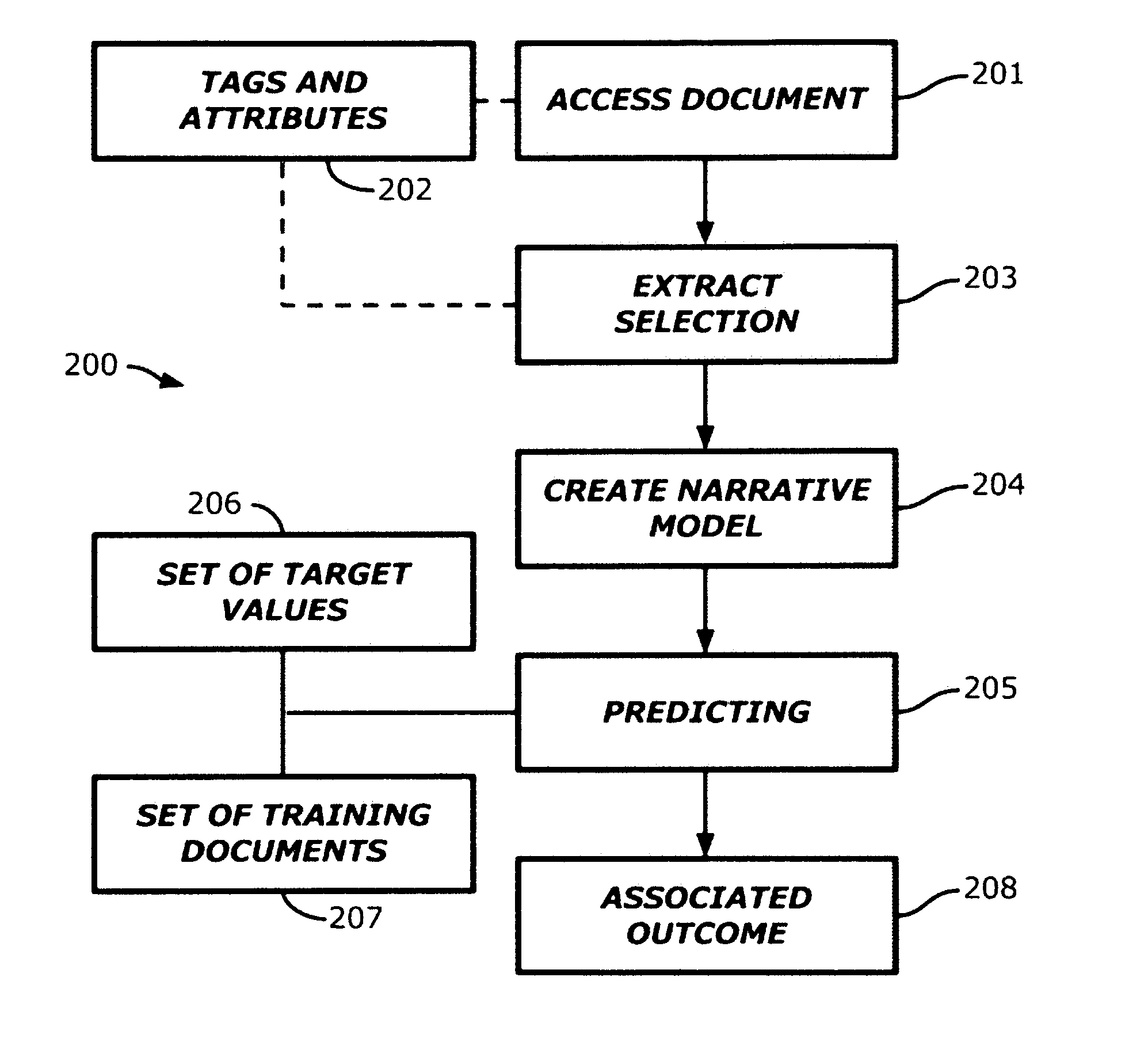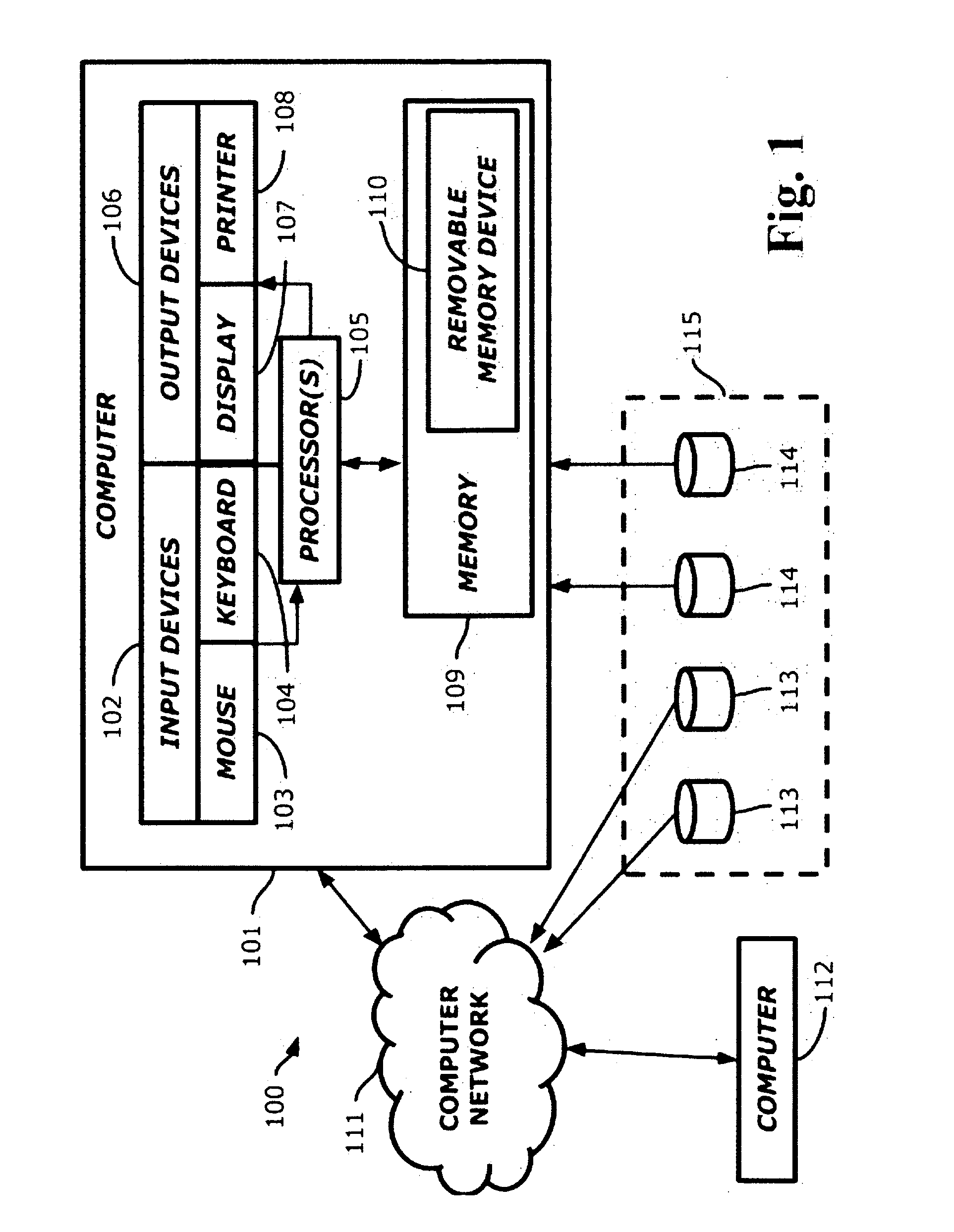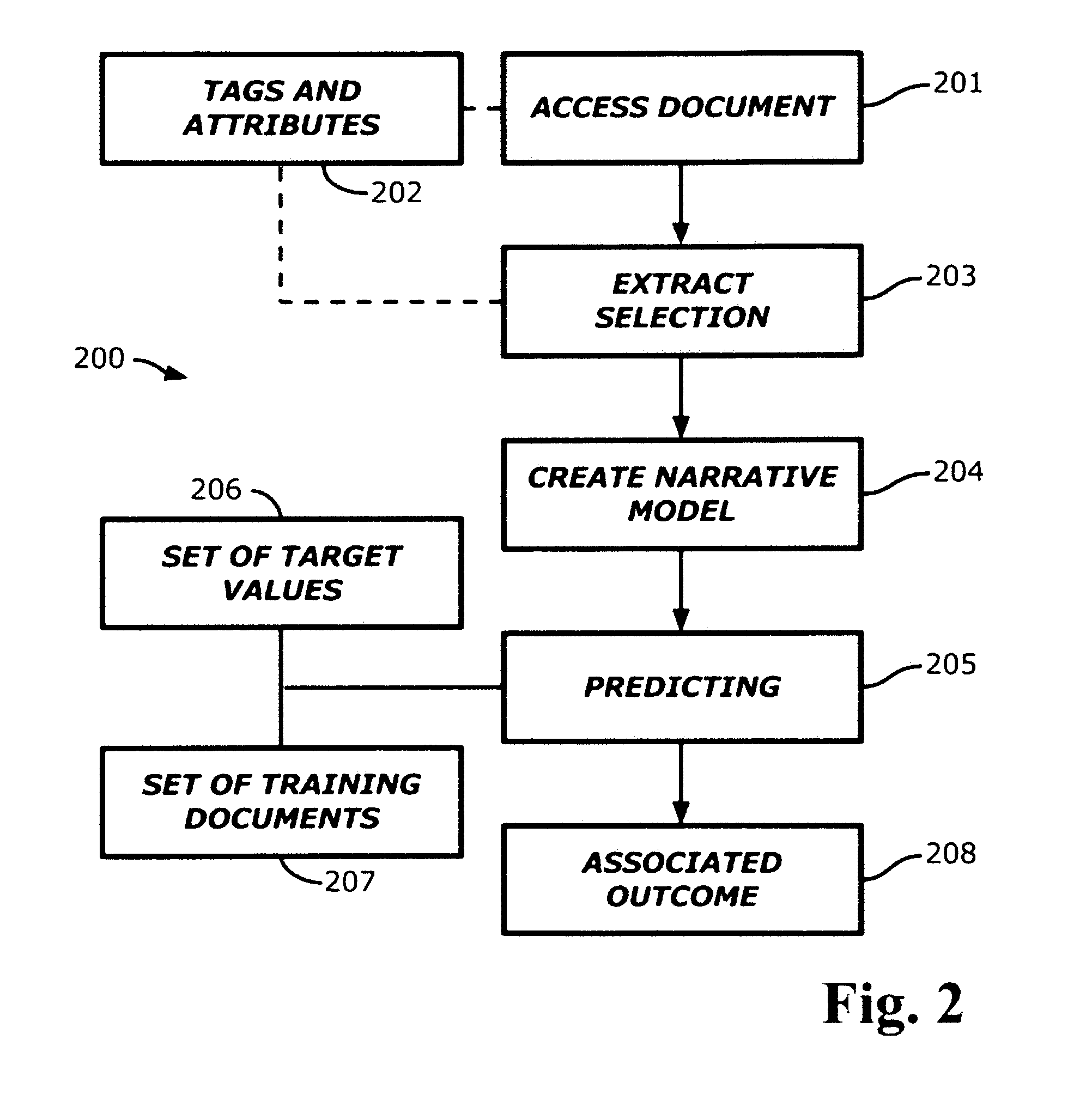Mapping Documents to Associated Outcome based on Sequential Evolution of Their Contents
- Summary
- Abstract
- Description
- Claims
- Application Information
AI Technical Summary
Benefits of technology
Problems solved by technology
Method used
Image
Examples
Embodiment Construction
[0022]In the following detailed description, numerous specific details are set forth in order to provide a thorough understanding of the invention. However, the present invention may be practiced without these specific details. The embodiments of the invention described in the present disclosure will be depicted in detail by way of example with reference to the accompanying drawings. The drawings are not drawn to scale, and the illustrated components are not necessarily drawn proportionally to one another. Throughout this description, the embodiments and examples shown should be considered as being provided for the purpose of explanation and understanding, rather than as limitations of the present disclosure. In the context of this particular specification, the term “specific apparatus” or the like covers, amongst other things, a general purpose computer. Algorithmic descriptions or symbolic representations are examples of techniques used by those skilled in the art. An algorithm is...
PUM
 Login to View More
Login to View More Abstract
Description
Claims
Application Information
 Login to View More
Login to View More - R&D
- Intellectual Property
- Life Sciences
- Materials
- Tech Scout
- Unparalleled Data Quality
- Higher Quality Content
- 60% Fewer Hallucinations
Browse by: Latest US Patents, China's latest patents, Technical Efficacy Thesaurus, Application Domain, Technology Topic, Popular Technical Reports.
© 2025 PatSnap. All rights reserved.Legal|Privacy policy|Modern Slavery Act Transparency Statement|Sitemap|About US| Contact US: help@patsnap.com



